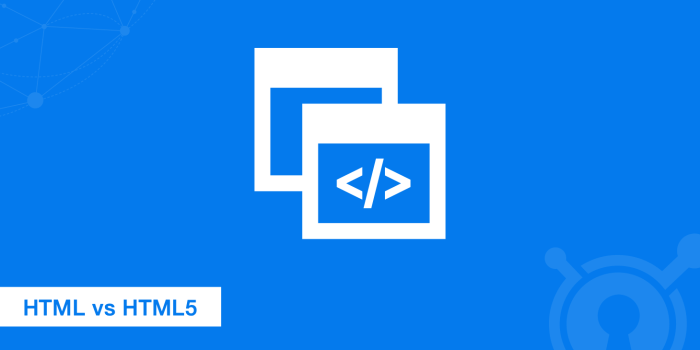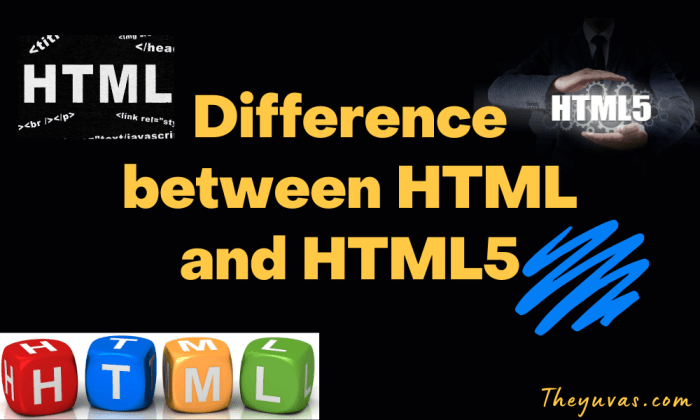Semantic HTML5 elements improve by providing clear signals to search engines about the meaning of different parts of a webpage. Search engines can better understand the context of the content, leading to better rankings. For example, using `
` to contain site branding and a navigation menu clearly indicates to search engines the important components of the site.
Element
HTML Use
HTML5 Use
Attributes (Key Differences)
`
`
Generic container for layout
Less semantically rich; often used for layout, but not recommended for structural elements in HTML5
Class, id, style (mainly presentation-focused)
``
Generic inline container
Less semantically rich; often used for styling small parts of text
Class, id, style (mainly presentation-focused)
`
`
Not available
Represents a self-contained piece of content (e.g., blog post)
Id, class, role (enhanced semantic information)
`
Not available
Represents content related to, but separate from, the main content (e.g., sidebar)
Id, class, role (enhanced semantic information)
`
`
Not available
Represents a site navigation section
Id, class, aria-label (explicitly marking navigation)
HTML5 introduced significant improvements over its predecessor, HTML4, expanding its capabilities in diverse areas like media handling, form design, and graphics. These advancements have profoundly impacted web development, enabling richer, more interactive user experiences. HTML5’s flexibility and versatility have also made it a cornerstone of mobile-first development strategies.
HTML5 incorporated several features absent in HTML4, streamlining development and enhancing user experience. These additions included semantic elements, improved media handling, and more robust form controls. This shift allowed developers to create more structured and semantically meaningful web pages, leading to better accessibility and maintainability.
HTML5 introduced dedicated elements for handling various media types, providing a more organized structure for web pages. This made it easier to embed and manage audio, video, and other multimedia content. Similarly, improvements to forms made it simpler to create interactive forms with a more structured layout, boosting user experience.
The ` ` element, combined with JavaScript, provides powerful capabilities for creating dynamic graphics and animations. It offers a versatile drawing surface where developers can implement various animation techniques and effects using JavaScript. The Scalable Vector Graphics (SVG) element is another valuable tool for creating vector graphics within HTML5.
Canvas: Canvas offers a flexible way to create 2D graphics on the web. Using JavaScript, developers can manipulate the canvas’s drawing context to create and modify shapes, images, and animations. This is especially beneficial for games and interactive applications. SVG: SVG (Scalable Vector Graphics) defines vector graphics in XML format. It offers high-resolution graphics that maintain their quality regardless of scaling. SVG’s vector nature is ideal for illustrations, logos, and other graphic elements where consistent scaling is crucial. SVG elements can be directly embedded in HTML5.
HTML5’s cross-platform compatibility makes it an ideal choice for mobile-first development. Its responsiveness and adaptability to various screen sizes reduce the need for separate mobile and desktop versions, simplifying development and maintenance. HTML5 is easily deployed and managed across different devices and browsers.
HTML5 introduced significant advancements that reshaped web development practices. The transition from HTML to HTML5 brought about changes in how developers approach structure, semantics, and interactivity, impacting various aspects of the development process, accessibility, performance, and the creation of modern web applications. These improvements facilitated a more efficient and user-friendly online experience.
The development process for HTML5 differs from its predecessor, HTML, primarily due to the addition of semantic elements and APIs. HTML5’s structured approach allows developers to create more semantically rich documents, leading to more organized and maintainable codebases. HTML5 also introduced new APIs, enabling developers to integrate more complex functionalities directly within the web page, potentially eliminating the need for external plugins or JavaScript frameworks.
The inclusion of new elements and attributes streamlined the development process, enabling more efficient and targeted coding.
HTML5 significantly enhances web accessibility by introducing semantic elements that convey meaning to assistive technologies. These semantic elements clearly define the purpose of content, enabling screen readers and other tools to better understand and interpret the information presented. The implementation of ARIA attributes further expands accessibility features by enabling developers to provide detailed information about interactive elements to assistive technologies.
This improved semantic structure makes websites more usable for individuals with disabilities, aligning with accessibility guidelines and standards.
HTML5 introduced features that optimized web performance, leading to faster loading times. The use of the ` ` element and the `` element, for example, allows developers to incorporate rich media without relying on external plugins, which can sometimes slow down page load times. The new features also facilitate the use of caching techniques, leading to improved performance and reduced bandwidth consumption. These optimizations benefit the user experience by enabling quicker page load times and reducing the overall loading time.
HTML5 facilitates the creation of interactive web applications through the introduction of new APIs, such as the WebSockets API and the Geolocation API. These APIs provide developers with the tools to build real-time applications, location-based services, and other interactive features directly within the web browser, without the need for extensive client-side scripting. The use of these APIs enables developers to create more dynamic and engaging experiences for users.
HTML5’s responsive design capabilities significantly improved cross-browser compatibility. The introduction of CSS3 media queries and flexible layouts enables developers to create websites that adapt to different screen sizes and devices, enhancing the user experience across various platforms. The improved compatibility across different browsers further enhances user experience, offering seamless navigation and functionality.
Feature
HTML
HTML5
Structure Based on tags with limited semantic meaning
Utilizes semantic elements to define content structure more accurately
Interactivity Limited interactivity; required external plugins for complex tasks
Offers built-in APIs for interactive elements and functionalities
Accessibility Limited accessibility features; required extensive JavaScript or other techniques for proper accessibility
Improved semantic structure for better accessibility support
Performance Reliant on external plugins for rich media
Includes `` and `` elements for rich media integration
Development Time Potentially longer development times for complex features
Potentially faster development times due to integrated features
HTML5’s enhanced features offer a wealth of possibilities for modern web development. Its semantic elements, multimedia capabilities, and responsive design capabilities have revolutionized how websites are built and used. This section delves into practical applications, demonstrating how developers leverage HTML5 to create dynamic and engaging user experiences.
HTML5’s improved structure and semantics allow for more meaningful content organization, resulting in a better user experience and enhanced search engine optimization. These features are crucial in today’s digital landscape, where user engagement and accessibility are paramount.
HTML5 introduced significant enhancements to forms, making them more flexible and powerful. These improvements facilitate complex data collection and validation.
Improved Input Types: HTML5 provides new input types like `email`, `url`, `number`, and `date`, which improve user input and validation. These types provide better browser-level validation, minimizing the need for complex client-side scripting for basic data checks. For instance, a `date` input field automatically formats the date input, making it more user-friendly. Similarly, `email` input helps validate the email format.
Custom Input Validation: The `required` attribute and the `pattern` attribute enable form validation directly within the HTML code. This reduces the amount of JavaScript needed to check data validity. For instance, a form field for a password might require a minimum length and a specific pattern, ensuring data quality before submission.
HTML5’s inherent support for video and audio content simplifies the integration of multimedia into web pages. This allows for a more immersive and engaging user experience.
Embedded Video and Audio: The ` ` and `` elements allow seamless integration of video and audio directly into web pages. This eliminates the need for third-party players, improving site performance and user experience.
Control Attributes: The `` and `` elements support attributes such as `controls`, enabling users to manage playback directly on the page.
Example: A web-based tutorial could seamlessly incorporate video demonstrations to explain concepts, enhancing comprehension and engagement.
HTML5, coupled with CSS, enables the creation of responsive websites that adapt to various screen sizes. This adaptability is crucial for reaching a wider audience and providing a consistent user experience across devices.
Flexible Layouts: HTML5, along with CSS, allows for flexible layouts that adjust automatically to different screen sizes and resolutions. This ensures the content remains visible and usable on various devices, from desktops to mobile phones.
Media Queries: CSS media queries enable the application of different styles based on the device’s characteristics. These queries can dynamically adjust layouts, font sizes, and images to fit various screen sizes.
Example: A news website could dynamically adjust its layout to fit smaller screens, maintaining readability and navigation on tablets and smartphones.
<video controls src="myvideo.mp4"></video>
<input type="email" required pattern="[a-z0-9._%+-]+@[a-z0-9.-]+\.[a-z]2,$">
<form>
<label for="name">Name:</label>
<input type="text" id="name" name="name" required>
<button type="submit">Submit</button>
</form>
Source: theyuvas.com
HTML5, having significantly impacted web development, continues to evolve. This evolution encompasses not only incremental improvements but also fundamental shifts in how we build and interact with web applications. Understanding these future trends is crucial for developers to effectively leverage the platform’s potential.
The future of HTML5 is closely tied to emerging technologies like WebAssembly and progressive web apps (PWAs). These developments are pushing the boundaries of what’s possible on the web, fostering more sophisticated and dynamic user experiences. The growing demand for responsive design and seamless cross-platform compatibility further fuels the need for continuous refinement in HTML5 specifications.
HTML5’s evolution is driven by the need for enhanced performance, improved accessibility, and expanded capabilities. Key trends include a greater emphasis on semantic web development, leveraging the rich set of semantic elements introduced in HTML5. This leads to more structured, understandable, and maintainable code. Further, the growing need for interactive and responsive web applications will likely lead to a more extensive use of APIs and JavaScript integration with HTML5.
The potential of HTML5 extends beyond current implementations. It is anticipated that HTML5 will play a pivotal role in developing immersive experiences like virtual reality (VR) and augmented reality (AR) applications. Its ability to seamlessly integrate with diverse technologies suggests that its role will grow significantly. This will be reflected in the development of more sophisticated and engaging user interfaces and the creation of new interactive applications.
Moreover, its continued evolution promises to address the limitations of older web development methods, further improving efficiency and performance.
Despite its strengths, HTML5 faces certain challenges. One key concern is the complexity of integrating different technologies and frameworks. The increasing sophistication of web applications can sometimes lead to complex interactions and maintenance issues. Ensuring compatibility across diverse browsers and devices remains a crucial consideration. Lastly, the ongoing evolution of the web landscape can sometimes make it difficult to keep pace with evolving standards and best practices.
Staying abreast of HTML5 advancements is vital for developers. Regularly reviewing official documentation from the World Wide Web Consortium (W3C) is crucial. Following prominent web development blogs, forums, and online communities allows for the dissemination of information and discussion on the latest updates. Attending conferences and workshops dedicated to web technologies can provide opportunities to learn directly from experts and engage with the community.
Participating in open-source projects that leverage HTML5 can also provide valuable insights and hands-on experience.
| Feature | Anticipated Change/Improvement | Rationale |
In conclusion, HTML5 has dramatically reshaped the web development landscape by addressing shortcomings in HTML and introducing groundbreaking functionalities. This comparison underscores the crucial role of HTML5 in creating dynamic, interactive, and accessible web experiences. The advancements in semantics, multimedia support, and performance enhancements demonstrate a clear path toward a more sophisticated and user-friendly digital environment. Further exploration of these nuances will undoubtedly provide a stronger understanding of the evolving needs of modern web design.
Post Views: 22











